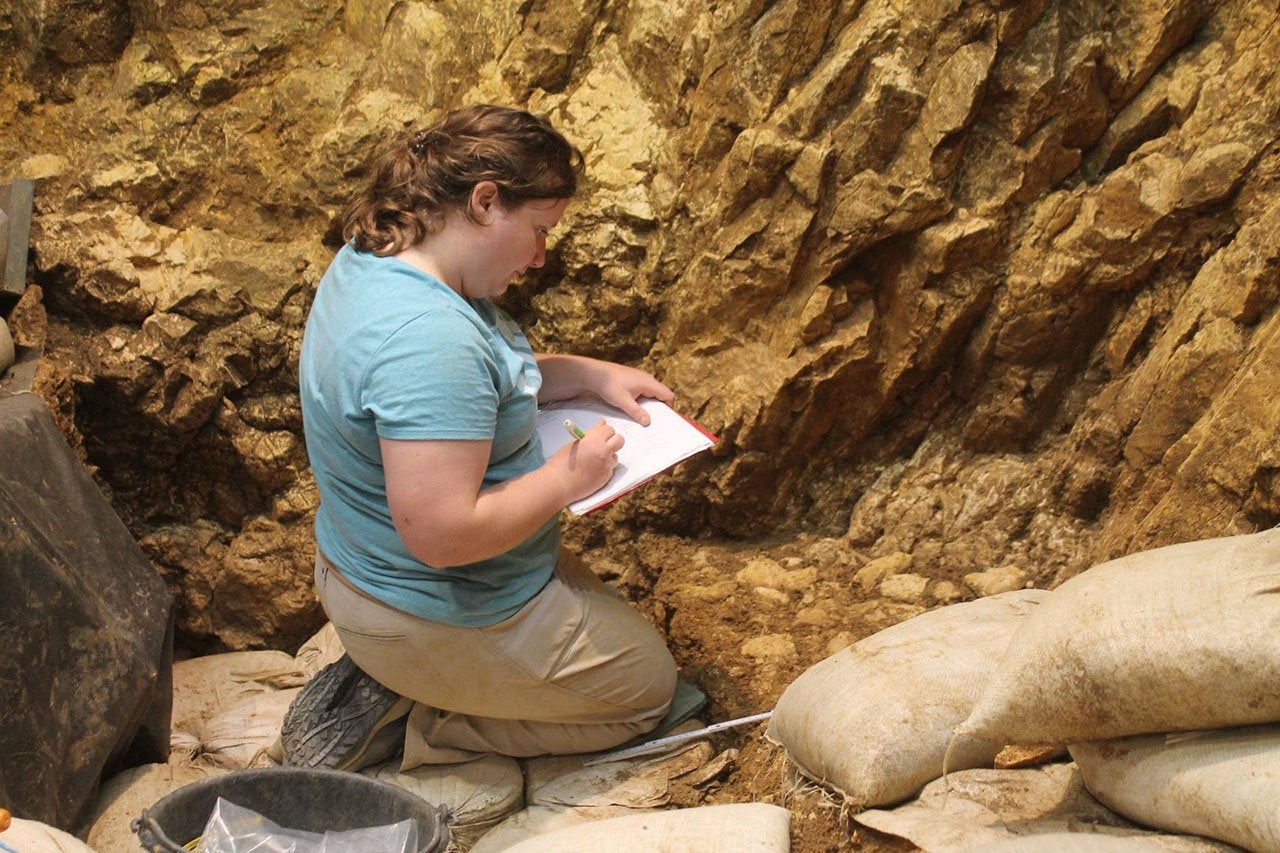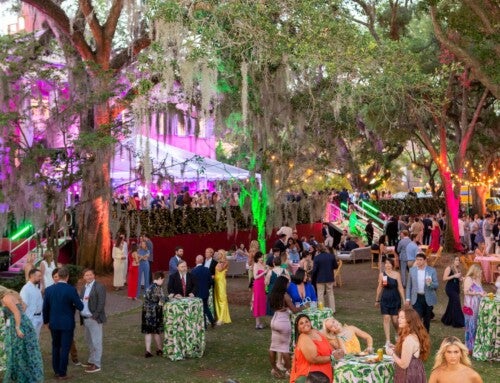Molly Van Ostran ’17 landed at the College of Charleston for her undergraduate studies based on one simple email: She’d contacted quite a few anthropology programs with active archaeologists, but the College was the only one that responded.
“That response really sold me on CofC,” says Van Ostran, who transferred to the College from Ivy Tech Community College Lafayette in Indiana in 2015. “If a stranger read some worried 20-year-old’s concerns and had the passion in their work and compassion to respond, that was where I really wanted to be. I knew then that that is a rare thing to find.”
Double majoring in archaeology and anthropology with a minor in geology, Van Ostran thrived at the College, taking advantage of coursework and research opportunities and serving on the executive board of the Archaeology Club and as a member of the Lambda Alpha National Anthropology Honors Society. For Van Ostran, the College of Charleston was only the beginning.
With a desire to delve deeper into her Paleolithic studies, Van Ostran is now pursuing her master of sciences in scientific archaeology with a focus on zooarchaeology at the Institute for Archaeological Sciences at the University of Tübingen in Germany. She is studying the taphonomy of fish bones during the Upper Paleolithic at a site in southwestern Germany.
“I am interested in studying periods when systems, both human and environmental, are in periods of change, and I like to focus on information that has been overlooked by the mainstream,” says Van Ostran, who is one of a small but growing number of ichthyoarchaeologists in the world. “The Upper Paleolithic, which took place approximately 50,000 to 10,000 years ago, is a time of great climatic and cultural change. Taphonomy, or the study of how an archaeological site forms, helps us discover how the local environment changed. Fish, which are historically neglected in archaeological studies, provide unique insights into the changing activities of humans, animals and the broader paleoclimate.”
It was at the College that Van Ostran discovered that archaeology was not out of reach as a career, and she took full advantage of the many research and excavation projects available.
For example, with support from the Catherine Wood Parker Memorial Award, Van Ostran participated in a field school at the College’s Stono Preserve in 2016. That’s where Maureen Hays, professor of anthropology, and Kimberly Pyszka ’92, now an associate professor of anthropology at Auburn University at Montgomery, taught her excavation techniques and laboratory analysis.
During the summer of 2017, she was one of the first research assistants in the Center for Historical Landscapes. There, under the supervision of Professor Jim Newhard, Van Ostran organized data and created and edited maps for the publication, Archaeology and Urban Settlement in Late Roman and Byzantine Anatolia: Investigating the History of Euchaita-Avkat-Beyözü and its Environment.
After an introduction to artifact analysis and database management in Associate Professor Allison Sterrett-Krause’s Roman glass lab – the only “live” analysis program for ancient Mediterranean glass in the United States – she also interned in the Charleston Museum’s archaeology department, where she broadened her understanding and application of these crucial skills.
Van Ostran’s interest in the Paleolithic was solidified when she took Hays’ course, Art and Ritual in the Paleolithic; a course in osteology got her thinking about the information found via skeletal remains; and the course, Geographic Information Systems, prepared her for the work she would later do at the Center for Historical Landscapes and for positions in geospatial modeling on projects in Italy and the Fertile Crescent.
“The College of Charleston gave me opportunities in and out of the classroom,” says Van Ostran. “My most significant takeaways are the critical thinking skills I developed – and the realization that archaeology is a continuously growing and evolving field, with countless opportunities to work together and learn from one another.
“Beyond the classroom, I have many lasting friendships, and met my spouse Apollo Bond ’19,” she continues. “Whether it was via long nights of studying or valiant attempts at setting up grids in the field, the Archaeology Program provided me opportunities to build a network that now crosses continents.”
After graduation, Van Ostran went to Europe to excavate at the Paleolithic site of Hohle Fels in the Caves and Ice Age Art in the Swabian Jura UNESCO World Heritage Site corridor in southwestern Germany, where she was introduced to archaeologists focusing on the Paleolithic at the University of Tübingen. Outside of Germany, she excavated at the Paleolithic site of Les Bossats, near Ormesson, France, with the Centre National de la Recherche Scientifique.
“There is something so mind-boggling and even romantic about being the first person to touch something last touched centuries or millennia ago,” says Van Ostran, who then returned to Charleston and joined Brockington and Associates as a GIS specialist mapping archaeological sites, conducting state-required data collection and mapping, performing density analyses, and developing and running predictive models.
During the chaos of the COVID-19 pandemic, Van Ostran realized that she wanted to venture more into data collection and analysis of archaeology, which is why she decided to pursue her master’s degree.
“What impresses me about Molly is her thoughts toward how to do our work better – how to be more inclusive, collaborative and engaging with the wider world,” says Newhard. “Molly is not just looking to further our knowledge, but to make the field of archaeology and the world a better place. I look forward to seeing what her future holds.”






